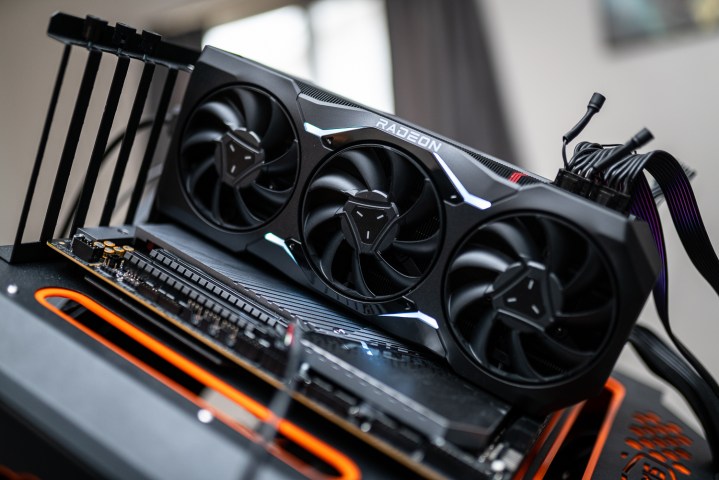Jacob Roach / Digital Trends
An interestingAMD patenthas just surfaced , and although it was file away a while back , finding it now is all the more exciting because this tech might be close to appearing in futuregraphics cards . The patent describes a multi - chiplet GPU with three separate dice , which is something that could both meliorate operation and tailor back on production cost .
In the patent , AMD refers to a GPU that ’s partition into multiple atomic number 66 , which it refers to as GPU chiplets . These chiplets , or die out , can either officiate together as a individual GPU or work as multiple GPUs in what AMD refers to as “ second mode . ” The GPU has three modes in total , the first of which makes all the chiplets knead together as a single , incorporate GPU . This enable it to partake resources and , as Tom ’s Hardwaresays , allows the front - ending dice to parcel out with command scheduling for all the shader locomotive engine dies . This is alike to what a veritable , non - chiplet GPU would do .

Jacob Roach / Digital Trends
The second musical mode is where it gets interesting . In this mode , every chiplet counts as an independent GPU . Each GPU handles its own project scheduling within its shader engine and does n’t interfere with the other chiplets . Finally , the third musical mode is a mixing of the two , where some GPUs function as their own entity while others combine the chiplets to work together .
As mentioned , this letters patent is not new . It was filed on December 8 , 2022 , just after AMD released the RX 7900 XTX and the RX 7900 crosstalk . Although leakers have predicted that AMD might go down the multi - chiplet route for at least a generation or two now , this architecture is presently only really used in AMD ’s data point center GPUs . AMD has already dipped its toe in similar technical school in RDNA 3 , though , with a design that used a graphics compute die ( GCD ) and multiple storage stash dies ( MCMs ) for the memory interface .
There are real benefits to switch to this character of architecture , as per the patent : “ By dividing the GPU into multiple GPU chiplets , the processing system of rules flexibly and monetary value - effectively configure an amount of active GPU forcible resource based on an operating modal value . ” If it could call on out to be cheaper to bring forth these eccentric of GPUs rather than using increasingly large monolithic Dy , we might start out control this aim outside of the data center field and in the GPUs we all use in our own computers .
Early leaks aboutRDNA 4 art cardsteased AMD going with a full multi - chiplet design , and it ’s well-situated to imagine that the final final result could have resembled what we see in the patent . However , with the newsworthiness that AMD is sticking to midrange nontextual matter identity card in this next contemporaries , any hope of a multi - chiplet GPU seems lost for now . Perhaps we ’ll see this pattern come to life in RDNA 5 .